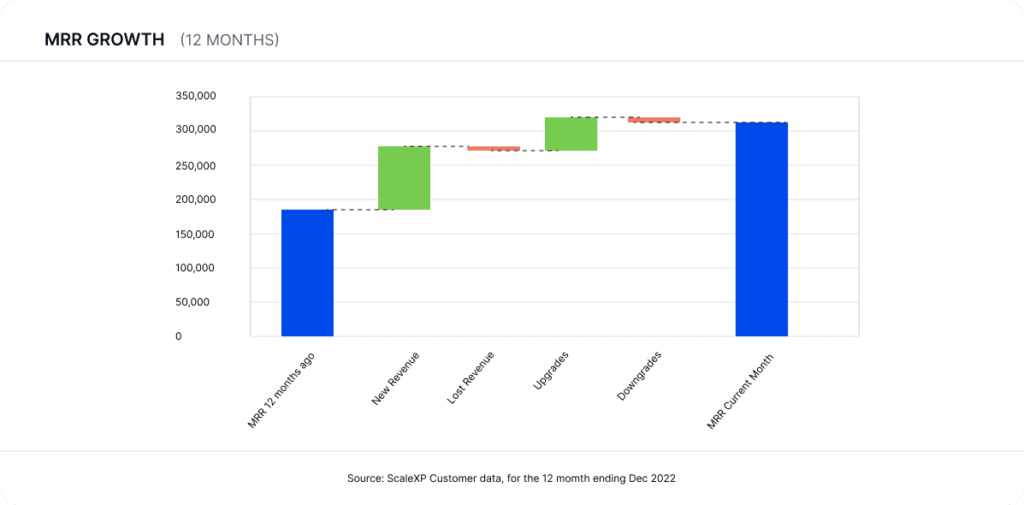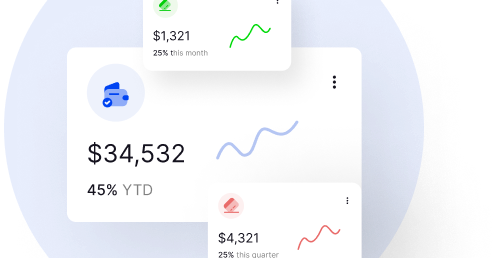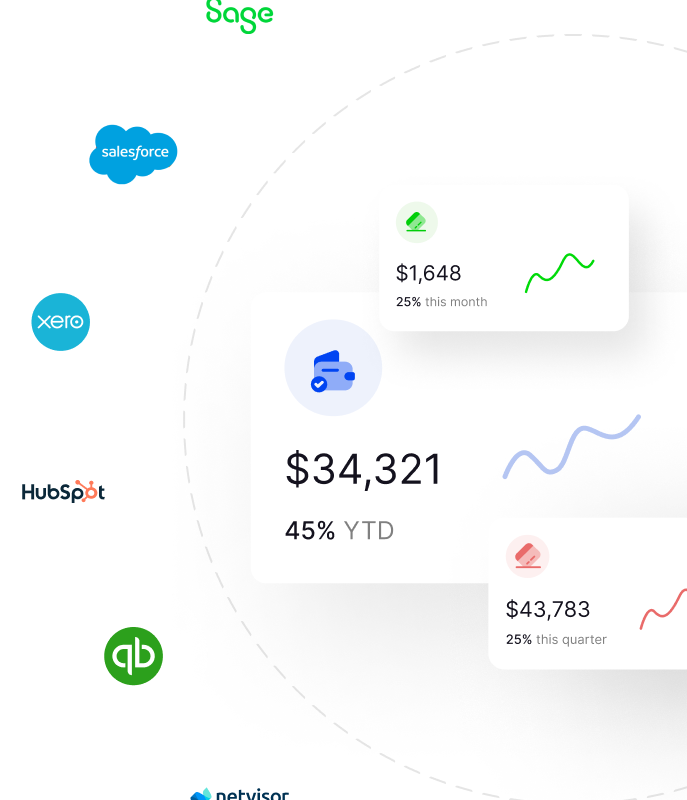
What is MRR Growth Rate?
MRR is Monthly Recurring Revenue; MRR Growth Rate is the percentage by which a company’s revenue has increased or decreased over a certain period of time, most typically a quarter or a year.
How is MRR Growth Rate calculated?
MRR Growth Rate is calculated by dividing the revenue for the current period by the revenue from the prior period and then subtracting 1.

For example, if a company had revenue of $100,000 in 2020 and $120,000 in 2021, its MRR Growth Rate would be calculated as follows: (120,000 / 100,000) – 1 = 0.2 = 20% Annual MRR Growth
In this example, annual figures are used. When revenue is calculated using just one month, the result is taken to the power of 12 to the get annualised result.

What is the difference between recurring and non-recurring revenue?
How is MRR Growth Rate used by SaaS companies, and what is a good MRR Growth Rate?
MRR Growth Rates vary widely by industry and company size, so the best indication of performance is frequently an internal comparison to prior quarter or prior year.
This being said, MRR Growth Rates are widely benchmarked.
And so, what are the MRR Growth Rate benchmarks?
The best MRR Growth Rates consider both the size of the SaaS business and their target customers. Our article on 2022 MRR benchmarks has full details.
This table provides a quick overview by company size, measured as annual revenue:
| Annual revenue | 2020 | 2021 | 2022 |
|---|---|---|---|
| Less than £1M | 100% (12-177%) |
100% (26-300%) |
100% (46-286%) |
| £1M - £2.5M | 60% (31-100%) |
90% (45-300%) |
79% (37-153%) |
| £2.5 - £10M | 41% (22-84%) |
50% (30-100%) |
50% (30-115%) |
| £10M - £20M | 46% (25-71%) |
50% (20-75%) |
72% (30-101%) |
| £20M- £50M | 50% (18-75%) |
35% (25-49%) |
40% (30-52%) |
| More than £50M | 21% (14-40%) |
30% (10-56%) |
30% (18-55%) |
To read the table, identify the row with annual revenue for your company. The three columns show data for 2020, 2021 and 2022. The number in bold is the average growth rate for SAAS companies of this size. The lower number is the MRR growth rate for the lowest performing quartile of companies while the highest number is the top quartile.
MRR Growth Rate visualisation example

ScaleXP fully automates MRR and MRR growth rate calculations. Using a series of smart test recognition algorithms, revenue is split into New, Lost, Upsells, and Downgrades.
Charts are built to show performance over time, by month, quarter, or year. This data makes it easier for SaaS companies to track performance and focus on driving performance, rather than data compilation.
You may also be interested in

MRR – MONTHLY RECURRING REVENUE
A forward looking view of MRR, usually MRR plus new bookings less churn.

REVENUE GROWTH RATE
Percentage increase in revenue over a certain period of time, most typically a quarter or a year.
ARR – ANNUAL RECURRING REVENUE
Predictable revenue that a company can expect to receive on an annual basis.


